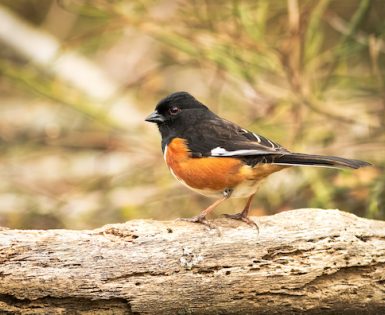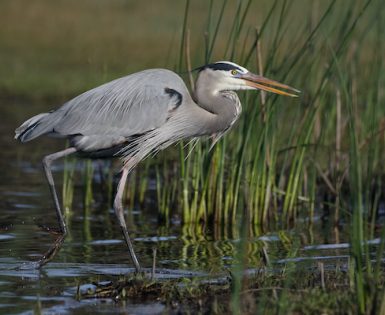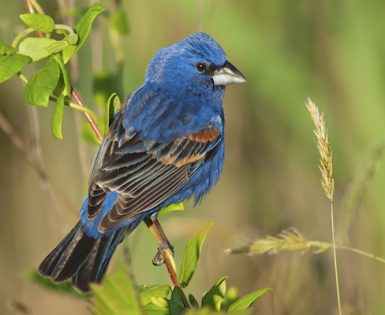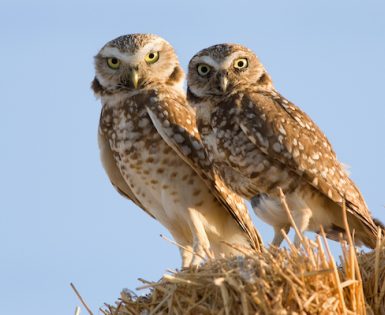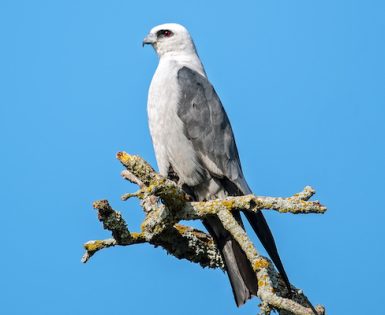Birding in the
Great High Prairie
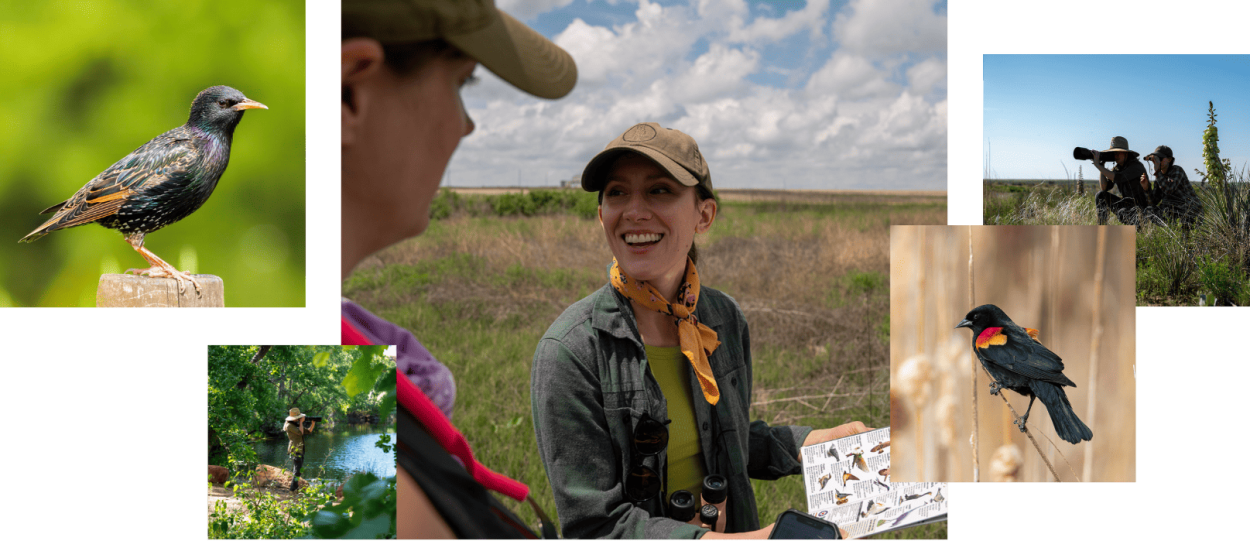
The Great High Prairie in Southeastern Colorado is known as one of the best birding destinations in the state.
Located right in the middle of countless species’ migration paths, hundreds of birds can be seen throughout the year. Start right in downtown Lamar or out on the prairie in one of the many surrounding state wildlife areas.
A leisurely stroll down Willow Creek trail can produce many Mississippi Kite sightings as they frequent the area. Go deeper into Queens State Wildlife Area and locate hidden gems like a Blue Grosbeak and the many shorebirds found around the reservoirs.

Second in attraction only to the migrating snow geese in February are the burrowing owls scattered throughout the region. The tiny little owls spend much of their time on the ground, in burrows, or in the air not far above. Not only do they share space with the prairie dogs often found nearby, but they also use their old tunnels after they’ve moved on.
Plan for a delightful day of watching these two creatures interact around Queens State Wildlife Area, or for a pleasant way to end the day, watch the sunset at John Martin Reservoir State Park while the burrowing owls hunt for dinner.
For a pleasant way to end the day, watch the sunset at John Martin Reservoir State Park while the burrowing owls hunt for dinner.
Getting Started
An activity friendly for all ages, a day of birding needs virtually no set up. Equip yourself with a pair of binoculars and some basic supplies, and you’ve got all you need for an exciting day of bird watching.
As you advance, there’s a whole world of accessories like cameras and telephoto lenses to enhance the experience, but as you begin, look to these basics:
- Binoculars
- Wide-brimmed hat
- Sunscreen
- Sunglasses
- Long pants
- Hiking shoes
- Journal to record your findings
- Map or guide of birds specific to the area
A tremendous resource is an app created by the Cornell Lab of Ornithology called Merlin. Using sound and pictures, it helps identify birds you see or hear. Free for use, it can be used anywhere where there is service. The sound feature is particularly helpful as, so often, a tiny bird like a chickadee can be heard but not seen. Leaving this on outside your doorstep for a few seconds can yield a variety of birds you’d otherwise be unaware of. This fun and educational app will help you log, spot, and identify birds as both a fledgling and experienced birder.
Birds & Locations
Look out for these birds often spotted at the following locations.
Of course, we can’t promise that any birds will be at their expected spots. Part of the reward of bird watching is the surprise of what you will find on any given day. With climate change affecting migration patterns, it’s a gamble what bird will show up where. Journey out to these locations and discover your favorite spot!
Notice that many species of birds resemble each other so closely that it’s hard to tell them apart, like the Cooper’s and Sharp-shinned Hawks. As you grow more experienced, see how many of these differences you can identify.
Birding Map
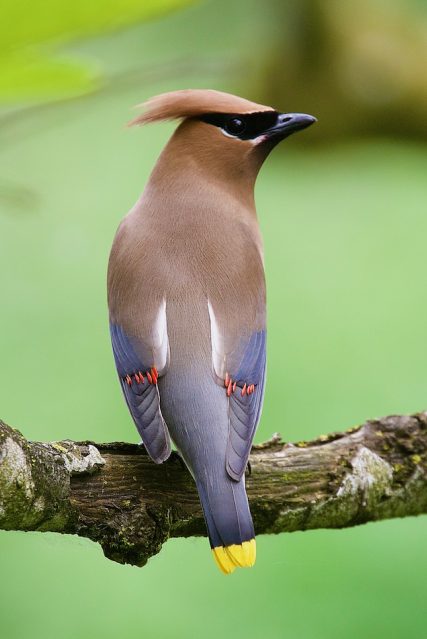
Cedar Waxwing
Cornell’s Four Keys to ID is a great resource for the beginner birder. Don’t worry if you stay on the site for hours; it’s an informational powerhouse of birds in the Great High Prairie and throughout the world!
Birding Tips
Before you know it, you’ll be able to identify a variety of birds with ease. Maybe you have a favorite like the Western Kingbird or Northern Flicker that repeatedly pays you a visit. Once you match a bird’s song to its image, it’s hard to forget. You’ll be walking around telling people, “Hear that?” That’s a Black-capped Chickadee!”
A great place to start is to learn some basics like size and shape, color, pattern, behavior, habitat, and sound.
This will be easy when you’re out in the field. You may notice you always see Cedar Waxwings in a certain tree by your house or Cliff Swallows doing dips in a busy intersection by a highway bridge.
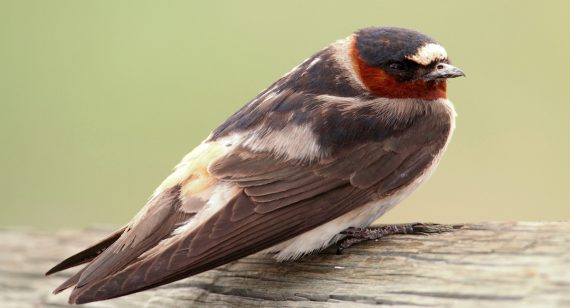
Cliff Swallow
Northern Flicker
Notice the distinctive spots and how the markings shift from the different varieties like Red and Yellow-shafted Flickers and male and female birds.
If you’re in the East, you’ll see the Yellow-shafted Flickers and Red-shafted in the West. They are found on neighborhood streets and in open woodlands. They are woodpeckers, so don’t be surprised if you see one hammering away at a tree. They also eat ants and beetles and can commonly be found on the ground digging for their next feast.
Fairly large, these birds can make quite a racket. The loud noise, common to all species of woodpeckers, is actually a form of communication. It can alert other birds of their presence and that this territory belongs to them.
If you find a striking orange and black feather on the ground, you can bet it’s from a Flicker! Listen to see if you can begin to recognize their familiar call.
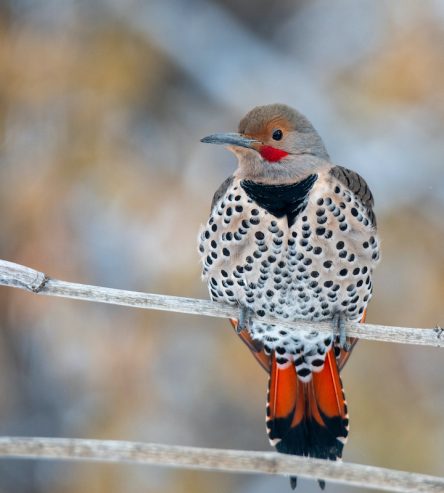
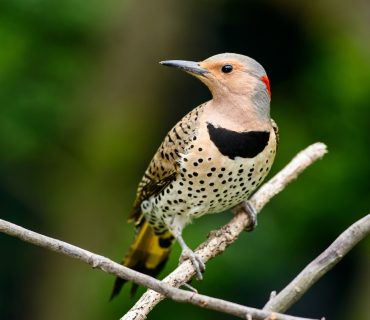
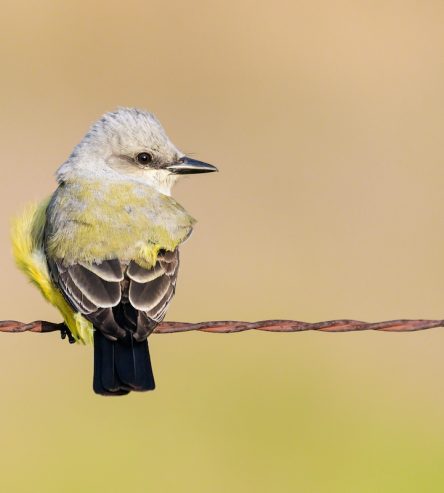
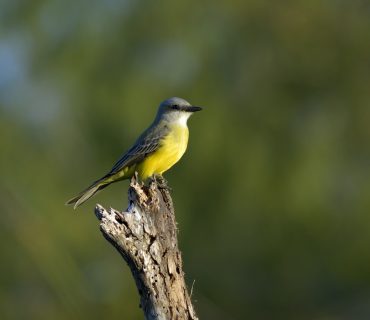
Western Kingbird
If you see a flash of yellow dart out in front of you on the trail, and it’s bigger than a bright yellow goldfinch, chances are it’s a Western Kingbird!
These sophisticated-looking gray and yellow birds can be found all over the West in the summer.
Their call can almost sound cartoonish with a high-pitched squeaking sound — almost like squeezing a toy with a squeaker in it. Paired with their distinctive colors, spotting a Kingbird becomes easy with practice.
The Great High Prairie, with its open grasslands, is a paradise for a Kingbird. Here, they can snack on insects and wild berries found around the state wildlife areas.
See how many of these beautiful birds you can spot next time you’re out birding.
Birding Responsibly
Follow a few simple rules and keep birding a fun and accessible activity for everyone.
Safe Distances
As with all wildlife, keep your distance from any birds you are viewing, especially if a nest and babies are visible. Certain birds, like crows and ravens, can easily imprint onto humans. Feeding and befriending a crow may seem like an enjoyable activity, but it’s actually guaranteeing that that bird will no longer hunt for itself and instead rely solely on you for food. Please avoid this and keep birds wild.
Binoculars and Lenses
Binoculars will not only help you view safely from a distance but will provide opportunities to see more birds from a disclosed position. A phone camera will not get you far in bird photography. If photographing birds is something you're interested in, research telephoto lenses and see if they're right for you.
Drones
Drones are an incredible way to see the unreachable. Please be conscious of the area when using one, as a bird sees a drone as a complete threat. Raptors have been known to attack them on occasion. For a smaller bird, they’re no match. A drone could cause serious harm.
Recordings
It may be tempting to lure a particular bird with a recorded song. This puts birds at risk of adopting unnatural behaviors, leaving their routine habitats, or interacting with humans. Instead, record an unfamiliar bird call and discover what bird it is.
Pets
A wrong step over a snapping branch can send a flock of birds flying. Human presence can be disruptive for birds, but a dog’s can be damaging. Leave the pets at home if you’re going out for a dedicated day of birding.
Trails
As a general rule, stay on designated trails to not damage any surrounding plant life. Some bird species nest on the ground. Stepping on some eggs would ruin any day of birding.
Copyright 2020 Prowers County | Web design by VistaWorks


